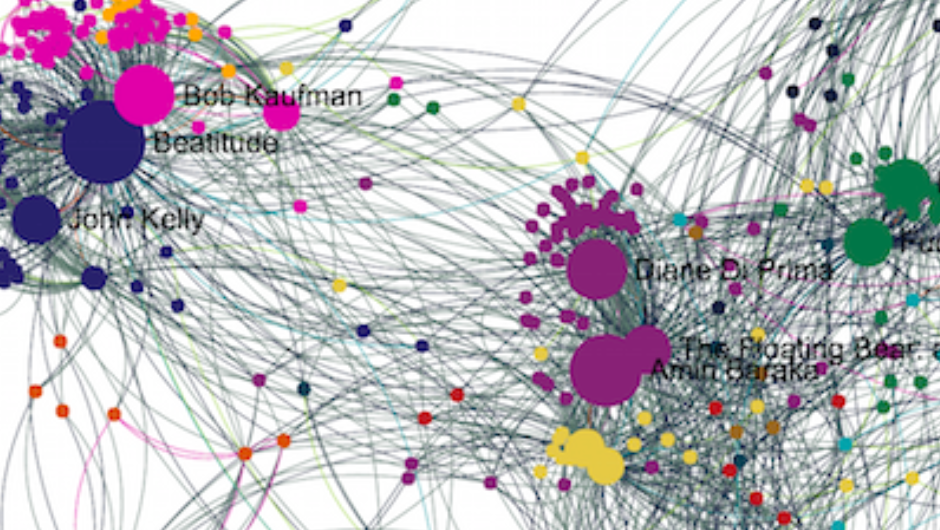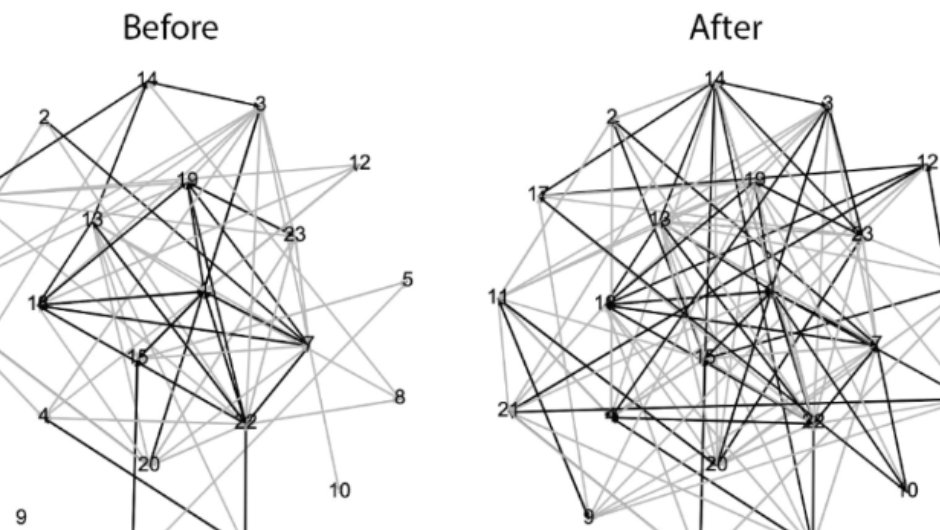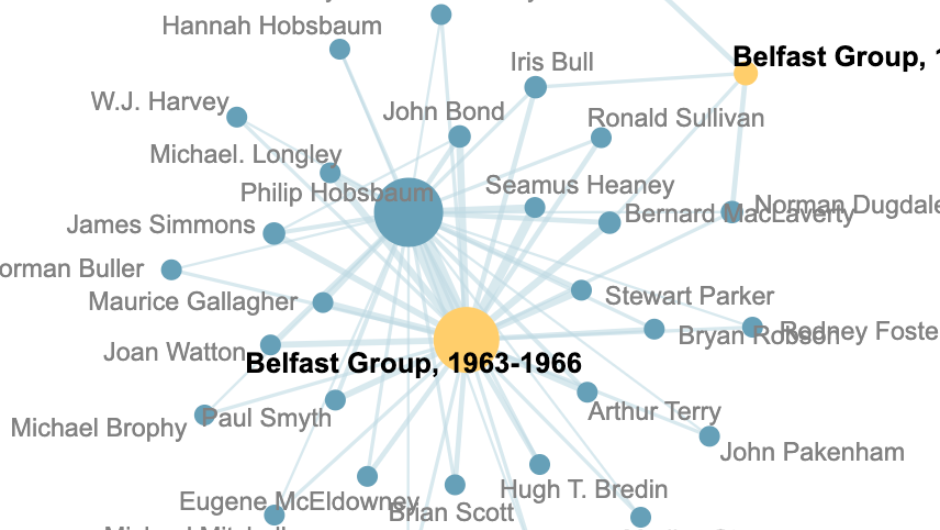Network analysis is a computational approach to studying the relationships between people, places, or things.
This approach assumes that understanding interconnectedness is central to research and seeks to quantify relationships so that they can be visualized and explored graphically.
There are two types of data, nodes and edges, that are essential to building networks. Nodes are whatever the objects of study are. Edges are connections between pairs of nodes. Once you prepare tables for nodes and edges, you can begin to explore networks using specialized software.
ECDS can assist you in conducting network analysis in the following ways:

Samothracian Networks is a collaboration with Classics professor Dr. Sandra Blakely. It examines ritual and mobility in the world of ancient Greece by exploring social networks through quantitative analysis and visualizations.

Networking the New American Poetry is a partnership with the Raymond Danowksi Poetry Library at Emory that uses over 10,000 data points from a dozen rare poetry journals to analyze and visualize writing and publishing communities formed by mid-century American poets.

Written in collaboration with professors at the Emory University School of Medicine, this article uses Social Capital Theory and network visualizations to examine the development of strong and weak ties among participants in a program of an educator academy.

Belfast Group Poetry|Networks is a collaborative project by ECDS and Emory Libraries that uses enhanced library finding aid data to analyze and map connections between a group of Irish writers in the 1960s and the early 1970s known as the Belfast Group.